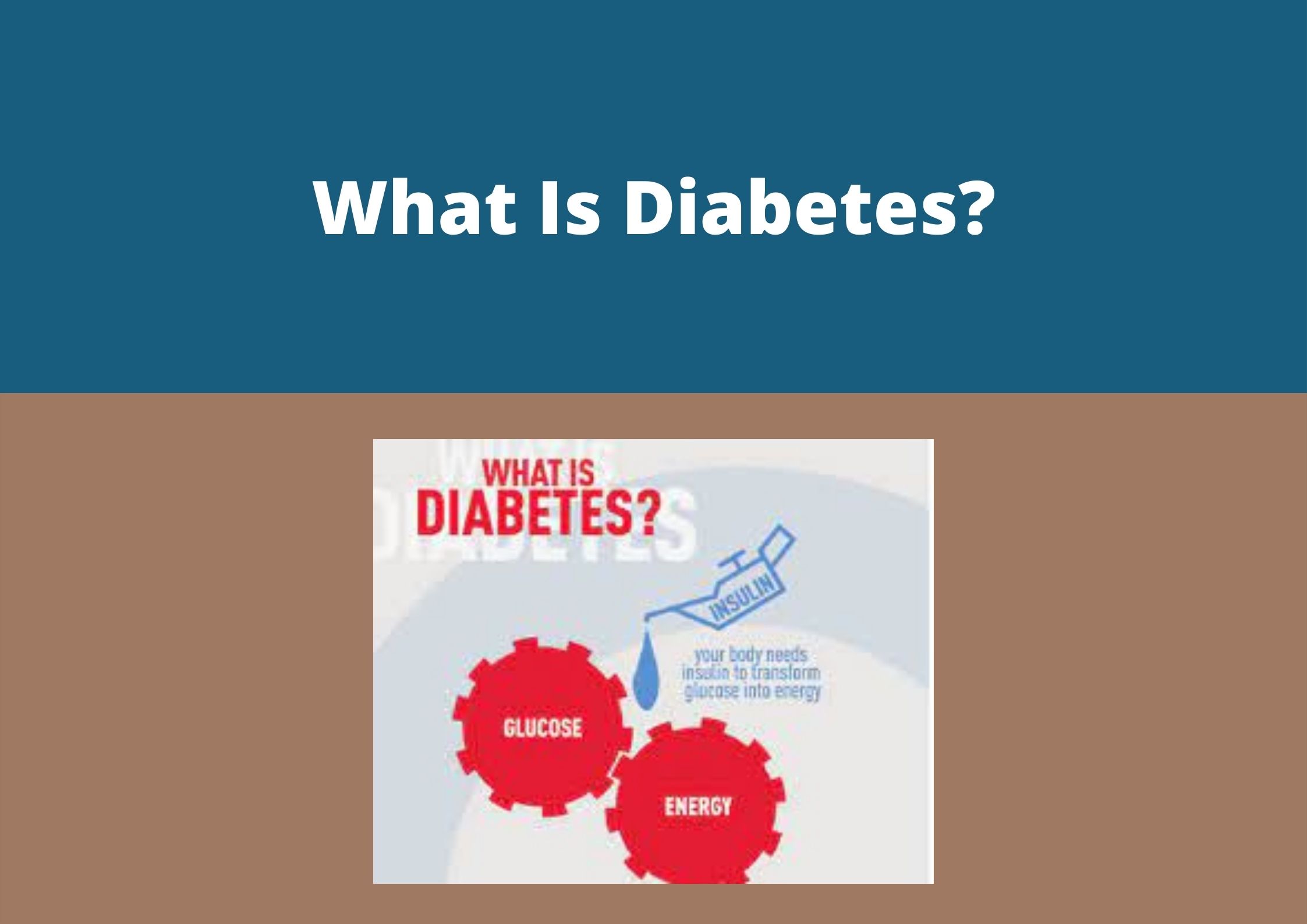What Is Diabetes?
What Is Diabetes? | Best informaton for diabetes : Simply defined, diabetes is a physiological condition that affects the way the body uses energy from sugar, starch, and other foods. Carbohydrates (sugars and starches) don’t cause diabetes. Instead insulin, a hormone produced by the pancreas, isn’t produced or doesn’t work correctly in the body and therefore, can’t be used properly for energy metabolism.
How does insulin work for healthy people? During digestion, glucose is released from carbohydrates and absorbed to circulate as blood glucose, or blood sugar, to body cells. Among healthy people, insulin regulates blood sugar levels. It allows glucose to pass from blood into body cells for energy production. Insulin also helps the body use amino acids and fatty acids from food. For people without diabetes, insulin helps blood sugar levels stay in a normal range so eating has little effect on blood sugar.
With diabetes, the body can’t control blood sugar levels normally. Too little or no insulin, or the inability to use insulin properly, hinders the body’s ability to use energy nutrients—carbohydrates, proteins, and fats. Instead of “feeding” cells, glucose accumulates in blood, causing blood sugar levels to rise. Since it can’t be used for energy, blood glucose spills into urine and gets excreted. That makes extra work for the kidneys, causing frequent urination and excessive thirst. Over time, high blood glucose levels can cause damage to kidneys, eyes, nerves, and the heart. As a key energy source, glucose is lost.
Diabetes belongs in these main categories: [what is diabetes]
Pre-diabetes. When a person’s blood glucose levels are higher than normal but not high enough for a diagnosis of type 2 diabetes, they have pre-diabetes.
Type 1 Diabetes.Type 1 diabetes, an autoimmune disease, accounts for 5 to 10 percent of diabetes cases. In this form of diabetes, the pancreas can’t make insulin.
Pancreatic beta cells that produce insulin have been destroyed, perhaps due to heredity or to damage prompted by a virus. The causes aren’t clear. Why is it an autoimmune disease? “Auto” refers to “self ”; the immune system, which normally protects the body from disease, instead attacks the beta cells that produce insulin.
The symptoms of type 1 diabetes often begin in childhood or the young adult years. However, people of any age can develop type 1 diabetes. Daily insulin injections or a continuous insulin pump, along with a careful eating and physical activity plan, are required to manage type 1 diabetes. Type 1 diabetes requires regular self-monitoring of blood glucose levels.
Type 2 Diabetes.Type 2 diabetes, a metabolic disorder, accounts for 90 to 95 percent of diabetes cases, with the incidence rising along with obesity rates, sedentary lifestyles, and an aging population, as well as better or early detection. About 80 percent of those with type 2 diabetes are overweight.
With type 2 diabetes, pancreatic cells don’t produce enough insulin or don’t respond to insulin normally (insulin resistance), even though the pancreas produces insulin.
Type 2 diabetes develops slowly and usually becomes evident after age forty; however, obese children are increasingly at risk, too. In type 2 diabetes, blood sugar levels often can be controlled through food choices, weight control, and physical activity alone.
Taking oral hypoglycemic medicines may help the body produce more insulin or better use the insulin the body makes. Sometimes insulin injections are needed, too. Type 2 diabetes also requires regular selfmonitoring of blood glucose levels.
Gestational Diabetes. Gestational diabetes occurs in about 4 percent of pregnancies, resulting from changes in hormone levels. The risk is higher among obese and older women.
Although it usually disappears after delivery, gestational diabetes needs careful control during pregnancy. Women with gestational diabetes often develop type 2 diabetes later in life, and usually in later pregnancies. See “Pregnancy and Diabetes” in chapter 17 for more information on gestational diabetes.
Early Detection of diabetes [what is diabetes]
Early detection of diabetes is important. The longer the body is exposed to high blood sugar levels, the greater the damage to the nervous and circulatory systems and to the blood vessels in the eyes, kidneys, heart, and feet.
The early years of diabetes offer an opportunity. If you have diabetes, that’s when you can do the most to prevent or reduce its long-term consequences—and so live a longer life with fewer health problems. According to the American Diabetes Association, many people don’t know they have diabetes—despite the harmful consequences, even when diabetes goes undetected for several years.
How would you know if you have it? These are common symptoms: frequent urination, unusual thirst, extreme hunger, unusual weight loss, extreme fatigue, and irritability.
In addition, those with type 2 diabetes also may experience frequent infections; cuts and bruises that heal slowly; blurred vision; numb or tingling hands or feet; or recurring skin, gum, or bladder infections. Some people with type 2 diabetes have no outward signs associated with high blood sugar levels. Keeping tabs on your blood sugar level is the way to really know.
Risk for Type 2 – diabetes ? [what is diabetes]
With this growing epidemic, what puts someone at risk for type 2 diabetes? The odds go up with these risk factors:
1 – Being over age forty-five.With age, the pancreas is less efficient at producing insulin.
2 – Being overweight or obese.With more body fat, body cells become more insulin-resistant.
3- Being physically inactive.
4 – Having low HDL cholesterol levels or high triglycerides.
